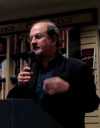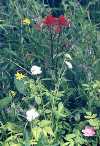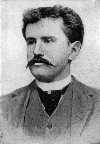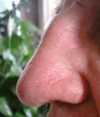 In 1940, four teens uncovered a fantastic archeological site, a cave system decorated with prehistoric paintings, drawings, and engravings that have been dated to about 15,000–13,000 BCE. Many of the paintings are drawn over former works, enabling experts to trace stylistic developments over more than 1,000 years. The later paintings, featuring animals along with signs and symbols, exhibit an advanced artistic quality and technical skill. Why was the cave closed to the public in 1963? Discuss
In 1940, four teens uncovered a fantastic archeological site, a cave system decorated with prehistoric paintings, drawings, and engravings that have been dated to about 15,000–13,000 BCE. Many of the paintings are drawn over former works, enabling experts to trace stylistic developments over more than 1,000 years. The later paintings, featuring animals along with signs and symbols, exhibit an advanced artistic quality and technical skill. Why was the cave closed to the public in 1963? Discuss
Source: The Free Dictionary
 Although called
Although called  Gatling, an inventor who began his career creating agricultural devices including a rice-sewing machine and a steam plow, is best remembered as the creator of a rapid-firing gun that was the precursor of the modern machine gun. He offered his Gatling gun to the Union army in the Civil War, but only a few were put into use toward the war’s end. For a time, Gatling worked on improving the gun, but he eventually went back to devising agricultural machinery. What were some of his other inventions?
Gatling, an inventor who began his career creating agricultural devices including a rice-sewing machine and a steam plow, is best remembered as the creator of a rapid-firing gun that was the precursor of the modern machine gun. He offered his Gatling gun to the Union army in the Civil War, but only a few were put into use toward the war’s end. For a time, Gatling worked on improving the gun, but he eventually went back to devising agricultural machinery. What were some of his other inventions?  Rushdie is a British-Indian novelist known for the allusive richness of his language and the wide variety of Eastern and Western characters and cultures he explores. After his 1988 novel The Satanic Verses was deemed sacrilegious, Iran’s Ayatollah Khomeini issued a fatwa, or legal ruling, sentencing him to death. Rushdie was forced into hiding, where he wrote Haroun and the Sea of Stories, a novelistic allegory against censorship. What is the fatwa’s current status?
Rushdie is a British-Indian novelist known for the allusive richness of his language and the wide variety of Eastern and Western characters and cultures he explores. After his 1988 novel The Satanic Verses was deemed sacrilegious, Iran’s Ayatollah Khomeini issued a fatwa, or legal ruling, sentencing him to death. Rushdie was forced into hiding, where he wrote Haroun and the Sea of Stories, a novelistic allegory against censorship. What is the fatwa’s current status?  On September 11, 2001, 19 Al-Qaeda terrorists hijacked four commercial airplanes. They crashed two planes into the World Trade Center’s Twin Towers in New York City and flew a third into the Pentagon building in Virginia. Passengers on the fourth flight attempted to retake control of the aircraft, but it crashed in a Pennsylvania field. The devastating terrorist attacks of 9/11 were responsible for 2,996 deaths and countless more injuries. What were the environmental consequences of 9/11?
On September 11, 2001, 19 Al-Qaeda terrorists hijacked four commercial airplanes. They crashed two planes into the World Trade Center’s Twin Towers in New York City and flew a third into the Pentagon building in Virginia. Passengers on the fourth flight attempted to retake control of the aircraft, but it crashed in a Pennsylvania field. The devastating terrorist attacks of 9/11 were responsible for 2,996 deaths and countless more injuries. What were the environmental consequences of 9/11?  The
The  O. Henry was the pseudonym of American short-story writer William Sydney Porter. As a young man, he wrote for newspapers and worked as a bank teller in Texas, where he was convicted of embezzlement. Although many people believed him innocent, he fled to Honduras. He soon returned, however, when his wife became fatally ill. He eventually served three years in prison, during which time he began writing short stories noted for their surprise endings. What was the origin of his pen name?
O. Henry was the pseudonym of American short-story writer William Sydney Porter. As a young man, he wrote for newspapers and worked as a bank teller in Texas, where he was convicted of embezzlement. Although many people believed him innocent, he fled to Honduras. He soon returned, however, when his wife became fatally ill. He eventually served three years in prison, during which time he began writing short stories noted for their surprise endings. What was the origin of his pen name?  Commonly called a “nose job,” rhinoplasty is surgery performed to improve either the function or appearance of a person’s nose. Sushruta, an Indian physician, developed rhinoplasty around 500 BCE. It was a necessary procedure at the time, because nose amputation was used as a punishment for certain crimes. Some of the techniques Sushruta developed are still in use today. In 1887, the first intranasal rhinoplasty was performed in the West. In modern rhinoplasty, what does the acronym SIMON mean?
Commonly called a “nose job,” rhinoplasty is surgery performed to improve either the function or appearance of a person’s nose. Sushruta, an Indian physician, developed rhinoplasty around 500 BCE. It was a necessary procedure at the time, because nose amputation was used as a punishment for certain crimes. Some of the techniques Sushruta developed are still in use today. In 1887, the first intranasal rhinoplasty was performed in the West. In modern rhinoplasty, what does the acronym SIMON mean?